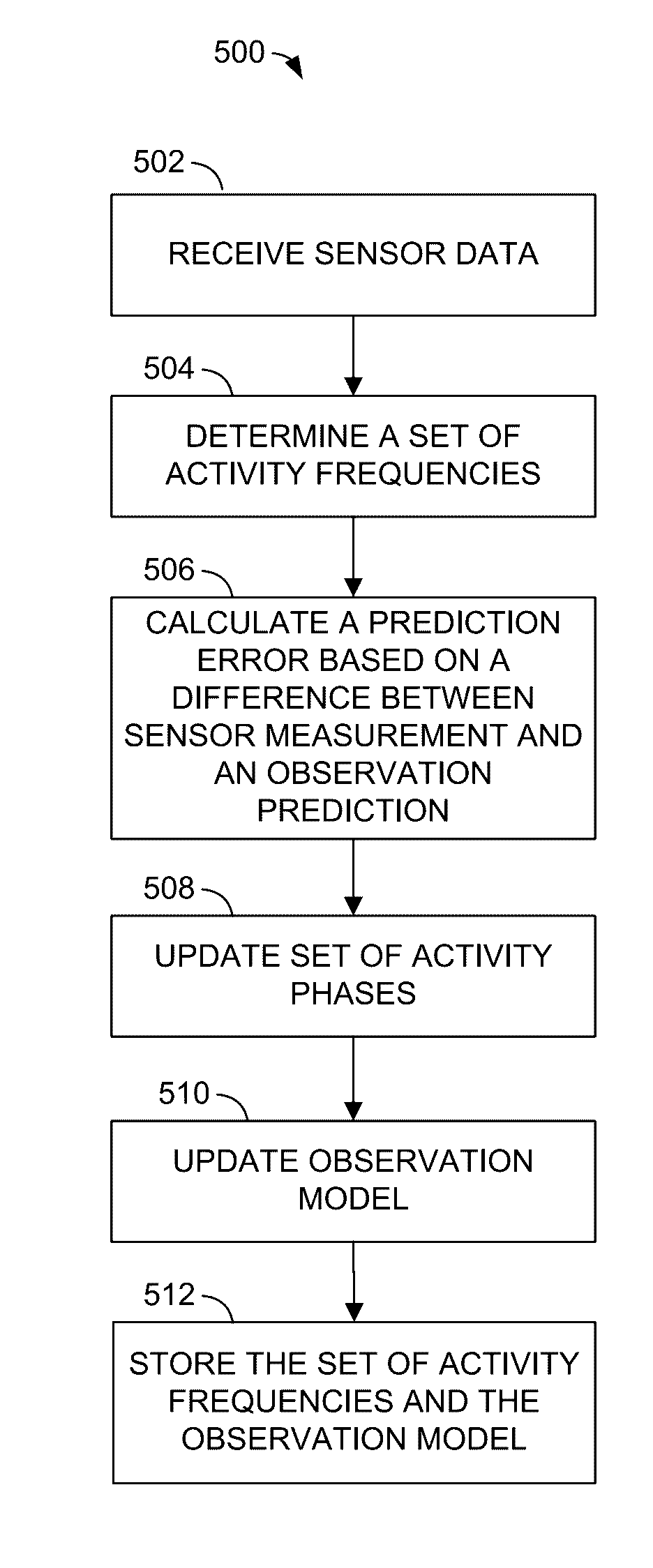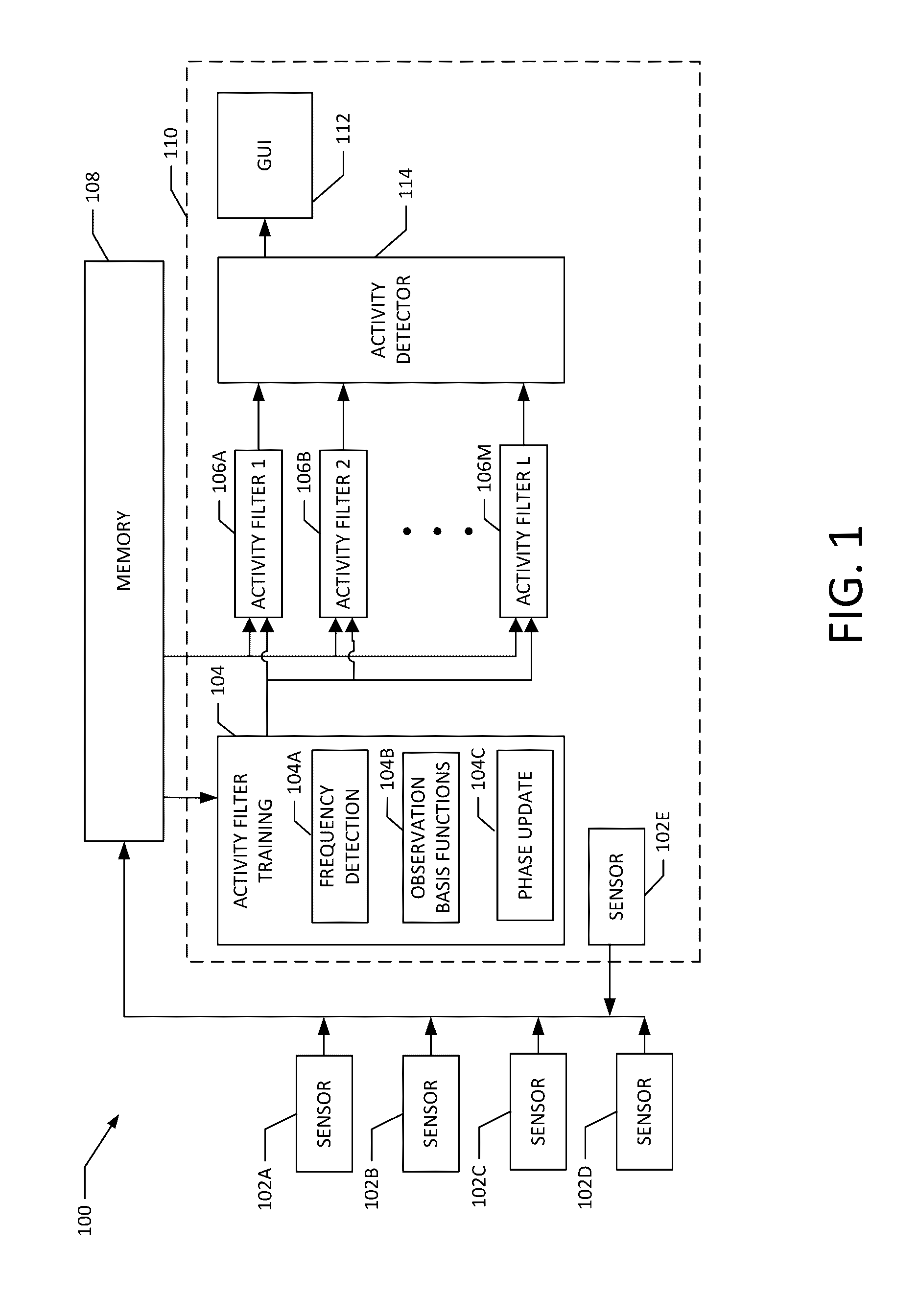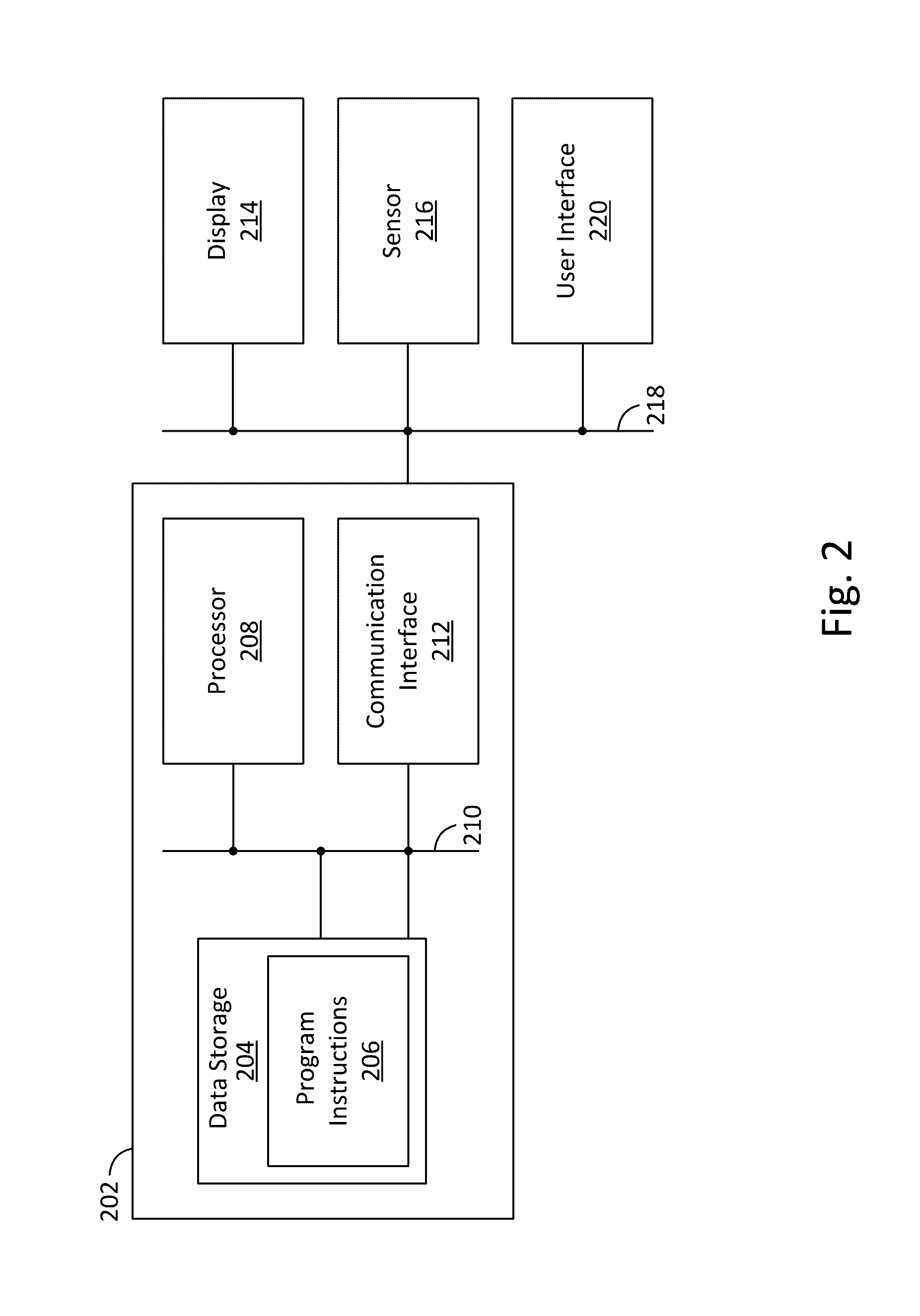Methods and apparatus for learning sensor data patterns for gesture-based input
- Summary
- Abstract
- Description
- Claims
- Application Information
AI Technical Summary
Benefits of technology
Problems solved by technology
Method used
Image
Examples
embodiments
[0147]At least one embodiment takes the form of a process for generating a gesture-detection (GD) filter. The process includes receiving sensor data captured by at least one sensor during a gesture, the at least one sensor selected from the group consisting of (i) a motion sensor that is attached to a user, (ii) a motion sensor that is attached to a user equipment, and (iii) an audio sensor, the sensor data including a plurality of sequential sensor measurements. The process also includes determining a set of activity frequencies associated with the sensor data received during the gesture. The process also includes iteratively calculating (i) a prediction error based on a difference between at least one of the plurality of sequential sensor measurements and an observation prediction ĥt from an observation model, the observation model operating on phases in a set of phases associated with the set of activity frequencies, (ii) an updated set of estimated activity phases based on the p...
PUM
 Login to View More
Login to View More Abstract
Description
Claims
Application Information
 Login to View More
Login to View More - R&D
- Intellectual Property
- Life Sciences
- Materials
- Tech Scout
- Unparalleled Data Quality
- Higher Quality Content
- 60% Fewer Hallucinations
Browse by: Latest US Patents, China's latest patents, Technical Efficacy Thesaurus, Application Domain, Technology Topic, Popular Technical Reports.
© 2025 PatSnap. All rights reserved.Legal|Privacy policy|Modern Slavery Act Transparency Statement|Sitemap|About US| Contact US: help@patsnap.com



